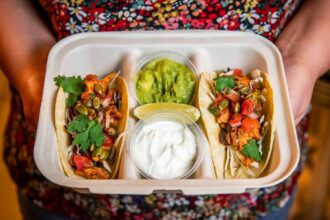The alarming reality sitting on our children’s plates has become impossible to ignore: approximately half of what our kids eat qualifies as ultra-processed food. This isn’t just a matter of occasional treats or convenience—it’s a fundamental shift in childhood nutrition with potentially far-reaching consequences.
Recent research has revealed that children across North America consume between 45-55% of their daily calories from ultra-processed foods—those industrial formulations containing ingredients rarely used in home kitchens, manufactured through multiple processes, and often packed with additives. Think chicken nuggets, packaged snacks, sugary cereals, and soft drinks that dominate grocery store aisles and children’s lunch boxes alike.
The appeal is undeniable. These products are designed to be irresistible with their perfect balance of salt, sugar, and fat—hitting the “bliss point” that triggers pleasure centers in developing brains. They’re affordable, convenient for busy parents, and relentlessly marketed directly to children through colorful packaging and cartoon characters that create powerful brand associations from an early age.
But the health implications are becoming increasingly clear. Children consuming high amounts of ultra-processed foods show higher rates of obesity, elevated cholesterol, increased risk of metabolic syndrome, and even altered gut microbiomes that influence everything from immunity to mental health. Perhaps most concerning, these eating patterns established in childhood often persist into adulthood, potentially setting the stage for lifelong health challenges.
“What we’re seeing is essentially a massive, uncontrolled experiment on our children’s health,” explains Dr. Marion Nestor, nutrition policy expert. “These foods are engineered to be hyperpalatable while providing minimal nutritional value, and we’re only beginning to understand the long-term consequences.”
The solutions aren’t simple. Economic realities mean many families rely on these affordable, shelf-stable options. Food deserts in many communities limit access to fresh alternatives. And the powerful food industry continues investing billions in marketing directly to children, creating powerful brand loyalties before critical thinking skills fully develop.
Some governments have begun implementing policies like front-of-package warning labels, restrictions on marketing to children, and taxes on sugary beverages. Schools are increasingly focusing on nutrition education and improving cafeteria offerings. However, these initiatives face strong industry opposition and vary widely by region.
For parents navigating this challenging landscape, experts recommend a practical approach: gradual changes rather than radical diet overhauls, cooking simple meals at home when possible, involving children in food preparation to build healthier relationships with eating, and focusing on progress rather than perfection.
The conversation around children’s nutrition continues evolving as we learn more about how food processing affects health. What’s becoming increasingly clear is that the contents of our children’s plates today will significantly influence their health tomorrow. The solution lies not in perfect parenting but in broader systemic changes that make healthier options more accessible, affordable, and appealing to families across all socioeconomic backgrounds.
As we navigate this complex nutritional landscape, one thing becomes evident: the food choices we make for our children aren’t just about today’s hunger or convenience—they’re about shaping lifelong relationships with food and health that will follow them into adulthood. And that might be the most important reason to reconsider what’s on their plate.
For more perspectives on modern parenting challenges, visit our CO24 Culture section, or explore emerging social patterns in our CO24 Trends coverage.























